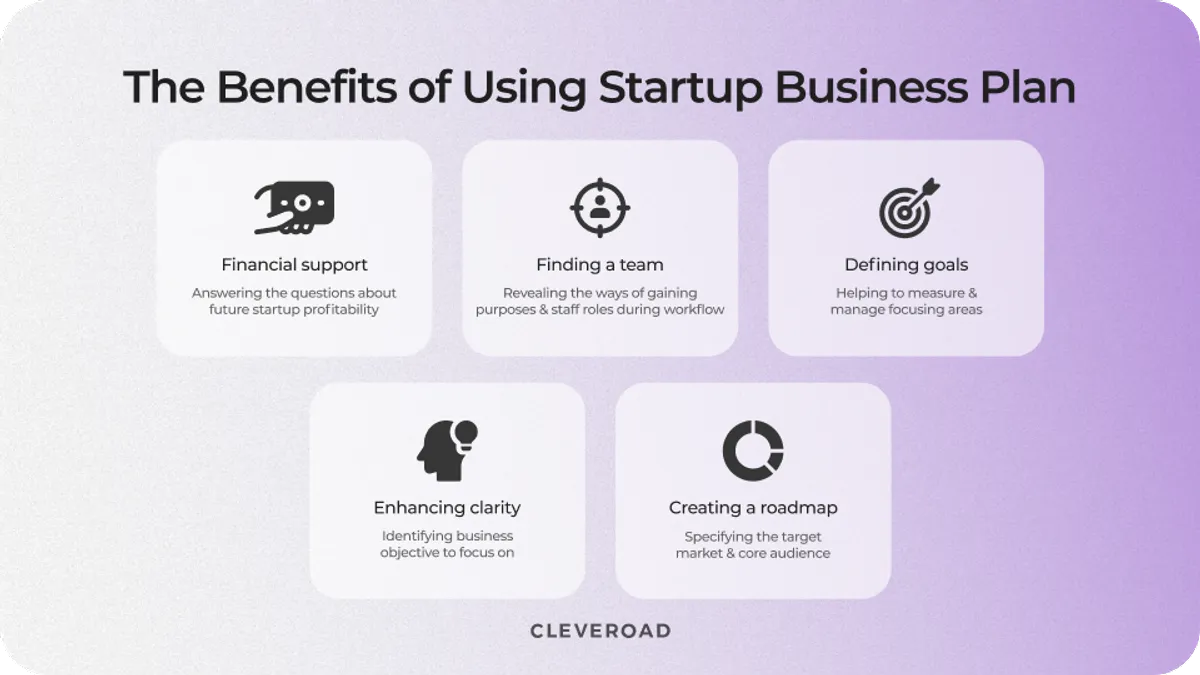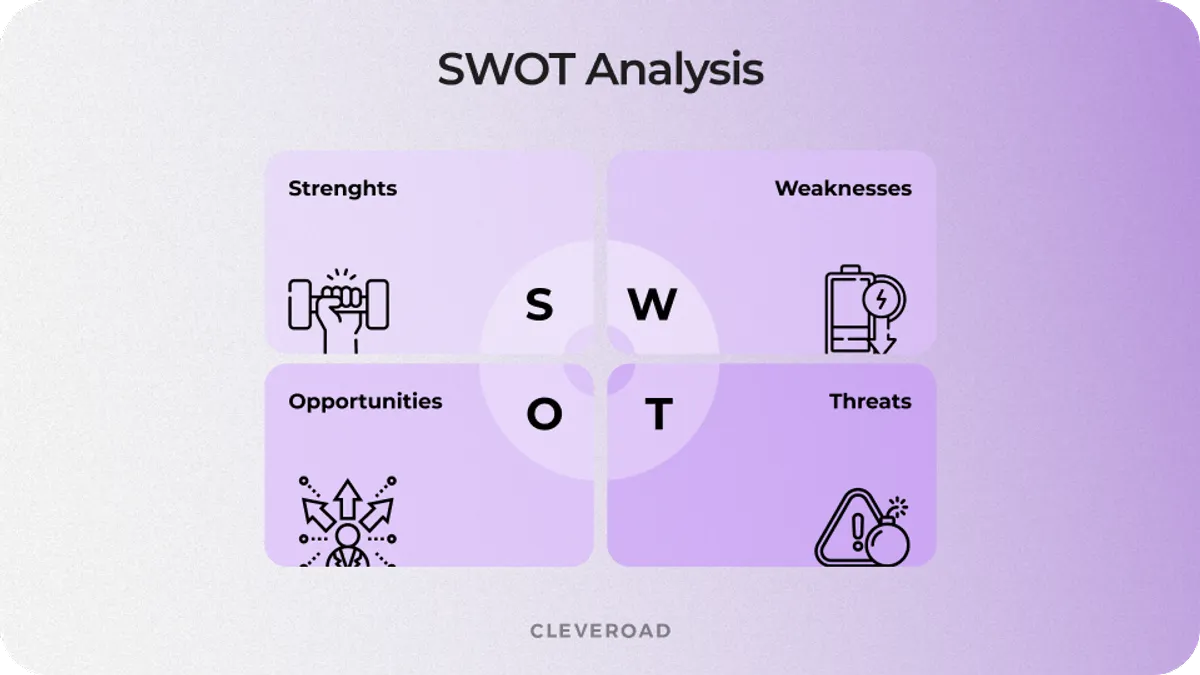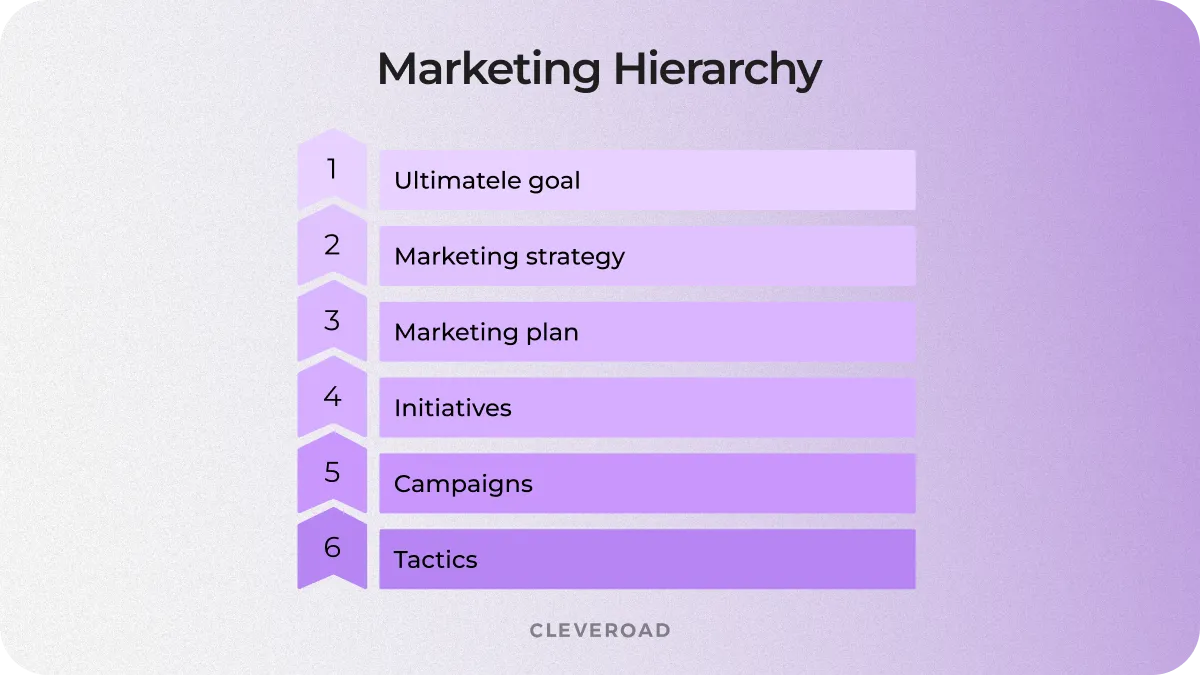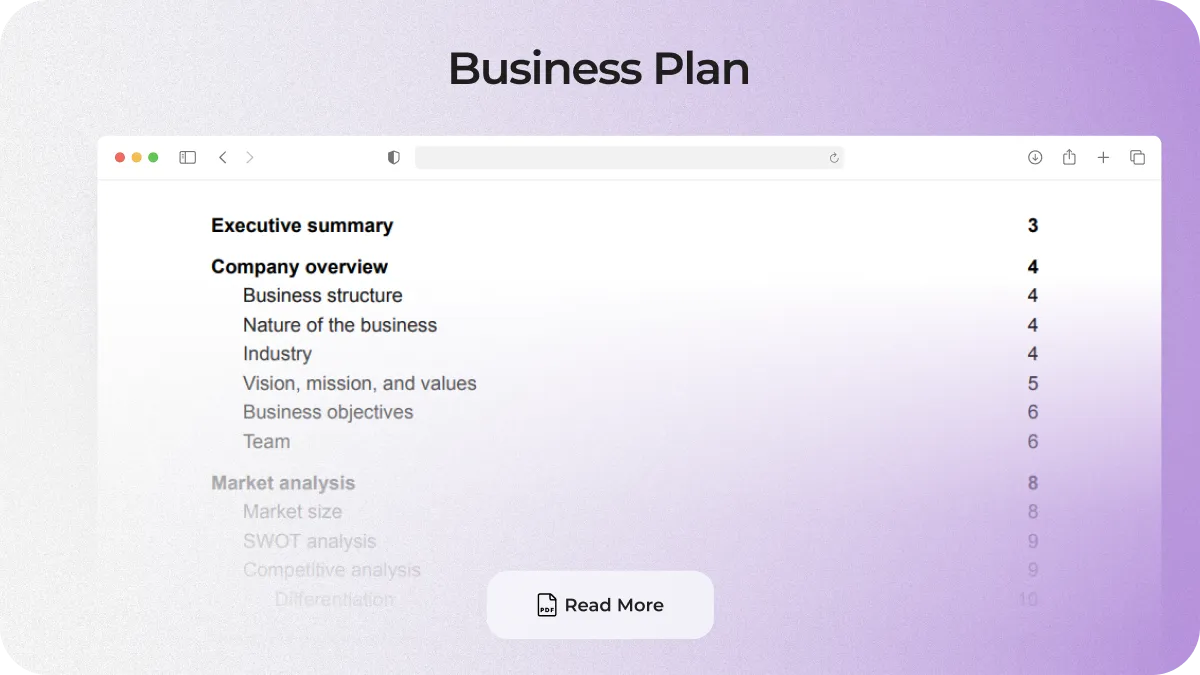How to Write a Business Plan For a Tech Startup in 2025 [With Template]
Updated 31 Mar 2025
12 Min
16359 Views
Technology business plan is at the root of every company because having a great idea isn’t enough for its prosperity and success. Many startups fail due to faulty training in their first year. An IT startup business plan is the first thing you should correct by organizing your thoughts and even finding the right people to work with, turning your idea into a prosperous project.
We'll cover how to write a startup business plan, thoroughly covering each part, give some advice, section templates, and more. Also, this article will guide you through an overall sample tech business plan to show you how it can look.
What Is a Tech Startup Business Plan?
Tech startup business plan is a document that summarizes strategies and ideas for the new company launch, completion of its goals, and support. This document helps entrepreneurs in looking for funding from investors and forming their company’s identity and purpose.
Now, we’ll look at stats to understand why a business plan is required. For instance, PlannIt reports that 70% of businesses that survive beyond 5 years follow a business plan. Also, Forbes reports that aspiring entrepreneurs with a plan are 129% more likely to pass the startup phase. Moreover, EBP says that businesses with a tech plan grow 30% faster.
Tech business plan serves companies for different purposes, such as below:
- Attracting investments
- Building a development strategy
- Predicting your upcoming financial expenses and needs
How can the software startup business plan assist business owners in implementing these purposes into life? It’s possible due to the following benefits business plan brings:

A technology business plan benefits
Why You Need a Business Plan for Technology Startup?
A thorough business plan for software startup takes your idea in the right direction, helps in making informed decisions, and sources funds for your venture. With no plan, your goals remain vague, leaving your resources wasted and opportunities lost.
Let’s look at the main reasons why a business plan is high in value.
Stronger funding and investor confidence
Investors and banks need to see a clear plan before they provide money. A technology startup business plan example includes financial estimates, potential revenue sources, profit margin, and market research — key details that show your startup is worth the investment. Without a solid plan, getting funding becomes much harder.
Effective risk management and cost control
Every startup faces risks, from changing markets to surprise costs. A tech business plan for software startup helps you spot problems early and plan ways to avoid them. Startups with a clear plan spend their money wisely and avoid common financial mistakes. They can pivot when necessary and stay resilient in the face of challenges.
Scalable growth and sustainable operations
Without a clear plan, startups often struggle to grow in a way they can handle. A business plan for technology startup lays out your pricing, customer strategy, and daily operations so your business grows at a steady pace instead of chaotically. It allows you to scale and manage resources efficiently.
Informed decision-making and business alignment
Startups without a plan make bad decisions that can slow down their progress. A business plan for a tech startup gives a clear structure for choices like hiring, product launches, and market expansion. It keeps your team focused when challenges arise and moving in the direction of solving them.
Clear vision and IT strategic direction
A business plan helps you define your mission, target market, and competitive edge. Without these, startups often waste time on the wrong priorities. A tech company business plan keeps founders, co-founders, and investors, such as angel investors and venture capitalists, etc., on the same page about long-term goals and strategies.
Read more about what software development services for startups we provide and discover how we can help you transform your business idea and develop a robust software solution
Essential Elements to Write a Tech Startup Business Plan
There are various elements that a technical business plan should contain to provide a clear roadmap for growth and sustainability. Investors must see how your startup will operate, scale, and generate revenue. Let’s discuss what a well-structured business plan must include.
Executive summary
This section serves as an introduction to the entire document. The International Journal of Business study reports that a well-written executive summary grabs readers' attention and instantly illustrates what your business plan for IT startup is all about.
Executive summary typically includes the following parts:
- Business overview. Introduce your startup to readers, and tell them about your plans and offers.
- Target market. Define the target market and provide a detailed market opportunity overview.
- Competition. Portray your competitors and the attributes that will set your company apart.
- Finances. Emphasize your company's goals and particular milestones, illustrating them with charts for greater clarity for prospective investors.
- Team. Briefly describe your team composition or tell about the lack of particular specialists and your possible ways to find them.
- Funds. This section tells potential investors how much money you'll need to bring your idea to life.
Company and product overview
A competent company and product overview in your technology company business plan allows investors to quickly understand what your business does and why it matters. So, let’s look in detail at the elements of the company and product overview aspects.
Company history
This part is based on your company's current stage. If you're an established organization looking for money for a new project, it's a good idea to provide investors with some company background.
Type of business
This section provides information about your industry. It should be brief but not excessively so. Indicate your domain: Travel, Healthcare, Logistics, etc. Finish this section off with a industry description.
The company’s mission
Your product exists to solve a clear problem. Explain its core function in simple terms, highlighting how it improves daily experiences.
Product purpose
The product will provide a clear solution to a problem, making a notable impact in meeting that specific demand in the market to make life easier, more efficient, or more enjoyable for the users.
Competitive advantage
Compare your product with existing solutions and show why customers would prefer it. Emphasize clear benefits rather than technical details.
Market research
Understanding your market is essential for building a successful business. Market research helps you identify your audience and stay ahead of competitors. Below, we’ve discussed the main market research parts you should provide in your tech start up business plan.
Conduct surveys. According to your audience assumptions, you may collect focus groups and conduct surveys. It is possible to complete them both online and personally for a tech startup business plan.
Analyze competitor’s audience. Competitors already meet consumers’ needs, and your task is to identify their audience and understand what makes them use their product or service.
Create a buyer persona. A buyer persona is an ideal consumer description, including how they use their leisure time, the obstacles they face, and their decisions.
Competitor analysis. Competitor research is critical to the company's success. It allows you to have a deeper understanding of your target market, as well as identify competitors, their tactics, and offerings.
SWOT analysis
It’s the crucial section in every IT start up business plan that summarizes the market research. SWOT is an abbreviation of Strengths, Weaknesses, Opportunities, and Threats.

SWOT analysis parts
- Strengths include your standout features that set you apart from the competition.
- Weaknesses highlight the areas that could slow you down in a competitive market.
- Opportunities are the factors that can drive your business forward, opening possibilities.
- Threats are external challenges that may impact your startup but remain beyond your control.
Team structure
Team composition is essential for a proper startup functioning, as well as for its future growth. If you’re going to launch a software development company at the beginning of the startup’s existence, your project team may include Chief Executive Officer (CEO), Chief Technology Officer (CTO), Chief Marketing Officer (CMO), and Chief Sales Officer (CSO). The software development team composition should contain the following specialists such as UI/UX designers, front-end and back-end developers, QA engineers, and others essential for the product’s appropriate development.
Also, the important part of the team is the Board of Directors. It is a hired group of individuals that assist you in running your business properly. Even if a Board of Directors is uncommon for startups, you may spot one in the team structure and care about these gaps to be filled.
We explained how to build a software development team. Check our guide to know more!
You should list and briefly characterize each key management person in your business. Try to tie their expertise to your company's current responsibilities, using the sample business plan for tech startup requirements, or write this part on your own. Also, it is common when a company lacks some management team members while developing a business plan. If it's your case, you should make a list of any absent personnel and the particular skills for future candidates, such as experience in the needed sector, duties, etc.
Marketing plan
The marketing plan outlines the company's competitive advantage as well as its marketing objectives. This part of the business plan for startup software company also aids in the particular domain identification and the development of a viable business strategy.
Moreover, you can define and put down such important data as a qualitative concept description and strategies for attracting clients to show stakeholders how to differentiate your startup activity from your competitors’ and ways you may engage the users to cooperate.
Look at a basic marketing hierarchy to easier understand such a plan’s part creation process:

Marketing Hierarchy
Technical plan
A solid technical plan ensures the right vendor builds a scalable, reliable, and cost-effective product that aligns with business goals. Investors and stakeholders need to see how the chosen technology supports long-term growth and operational efficiency.
Contact an experienced IT partner who has experience in helping startups and who will draft the technical part of the plan for you. Your vendor should define the tech stack, including programming languages, frameworks, and other tools that best suit the products and services you want to provide.
Experts should explain system architecture, hosting solutions, and data management strategies to reflect their scalability. Also, a technical plan includes describing where you need the integration with other systems and the way it would fit in the ecosystem. Moreover, this part of the technology business plan template should enforce measures for securing user data and ensuring compliance at all levels.
Besides the development process, the vendor will have to put in place clearly defined milestones, coding standards, and a structured approach for testing, deployment, and updates. The proposal must identify potential risks, such as scalability, infrastructure costs, and technical debt, and suggest mitigation plans. This well-presented part of the business plan tech startup example proves technical feasibility and assures investors that the execution is in expert hands.
Explore our IT consulting services to learn how we can help you create an IT strategy for your startup
Financial plan
A financial plan is a projection of future income and costs for your business. It's an important aspect of strategic planning that can turn vague objectives into concrete milestones. Complete the following parts in your sample business plan technology startup:
- Balance sheet. A balance sheet is a wonderful method to forecast your future financial condition and design your growth objectives if you're searching for finances.
- Expense projections. Expense projections help you estimate how much money will be spent on your idea implementation and how frequent these expenses will be.
- Income projections. This part of the sample technology business plan needs to summarize the project's future earnings and sales.
- Cash flow projections. The cash flow estimates are the crucial element of the financial plan. It shows your company's financial health at all stages of development.
- Monetization strategies. A company establishment and the beginning of the product development flow are only half of the way to market launch, impossible without a proper monetization strategy — a method of future profitability gains.
- Sales plan. The sales plan includes information about the tools and methods you need to achieve established objectives.
Technology Startup Business Plan Template
An understanding of the business plan for tech company structure facilitates the process of actual writing. Each section of such a plan serves a clear purpose, from outlining your own business idea to presenting the financial projections.
We made a clear business plan template for you. It breaks the listed elements down into what you actually have to write into your plan in the appropriate way. Also, it helps refine your vision, attract investors, and set your goals as the backbone of any startup project. So, let’s look at a business plan template for technology company.
How Cleveroad Can Help You with Tech Startup Business Plan
Cleveroad is a skilled software development company for startups with 13+ years of experience. We provide various startup services, such as product discovery, Proof of Concept (PoC) development, IT consulting, UI/UX design, and more. Also, we help in Minimum Viable Solution (MVP) development for testing and investor attraction. Our team offers a free-to-charge Solution Design Workshop to help you understand, without additional expenses, what an IT solution and resources you need in your case.
Choosing a cooperation with Cleveroad, you’ll get:
- Proven experience in software development across various industries: Healthcare, FinTech, Logistics, Retail, Education, Social media, Streaming, and more
- Flexible cooperation models: Dedicated Team, IT Staff Augmentation, Project-Based
- Product quality assurance and control at all levels validate every part of your software, such as functionality, performance, and security.
- Partnership with an ISO-certified company that strictly adheres to ISO 27001 security standards and implements ISO 9001 quality management systems
- All guarantees for your business information security and signing NDA per your request
We have helped numerous startups build a technical business plan, develop a solution, and launch it, successfully turning their idea into real life.
Recently, we’ve provided MVP development services to our client from Switzerland, a company called DGTL Ventures. They work on system integration and help companies explore, implement, and scale digital adoption solutions. DGTL Ventures partners with multiple companies, including the well-known BMW Group, AXA Group, TUI, Robert BOSCH, Henkel, and others.
Our client decided to expand their presence with a digital startup idea, so they needed a new software development partner for their new project — Hairdressers. We developed from scratch an MVP version of the Hairdressers platform and made it within an adequate budget and quality.
Here’s what our client Gilles Fransen, CEO of DGTL Ventures, says about working with Cleveroad:
Gilles Fransen, CEO of DGTL Ventures: Testimonial on Cleveroad's Software Development Expertise
Get startup software development services from a reliable vendor!
Contact us! With 13+ years of experience, we are ready to help you bring an idea to life and develop a robust IT software solution that will attract audiences and investors
Tech startup business plan is a document that summarizes strategies and ideas for the new company launch, completion of its goals, and support. This document helps entrepreneurs in looking for funding from investors and forming their company’s identity and purpose.
Follow these steps to make a business plan for a tech startup:
- Step 1. First of all find a flexible template to jot down your business plan.
- Step 2. Write company description.
- Step 3. Define your goals, make a list of requirements
- Step 4. Conduct market research and SWOT analysis
- Step 5. Think about team structure
- Step 6. Provide main parts of the business plan, such as marketing, technical, and financial.
To write a business plan for technology, you need to include these elements:
- Executive summary
- Company and product overview
- Market research
- Team structure
- Marketing plan
- Technical plan
- Financial plan
A solid technology plan ensures the right vendor builds a scalable, reliable, and cost-effective product that aligns with business goals. Investors and stakeholders need to see how the chosen technology supports long-term growth and operational efficiency. Your vendor should define the tech stack, including programming languages, frameworks, and other tools that best suit the products and services you want to provide. Also, experts should explain system architecture, hosting solutions, and data management strategies to reflect their scalability.

Evgeniy Altynpara is a CTO and member of the Forbes Councils’ community of tech professionals. He is an expert in software development and technological entrepreneurship and has 10+years of experience in digital transformation consulting in Healthcare, FinTech, Supply Chain and Logistics
Give us your impressions about this article
Give us your impressions about this article
Comments
6 commentsVery useful article.
Thank you for helping
Thanks for the article! I'm an entrepreneur, and I've been stuck in this business plan stage. It's hard for newcomers to gather all their thoughts in one plan. But you've explained it perfectly!
Great job, very useful!
Good article. Found it interesting.
Nice piece of information. You've nailed its explanation. Besides, these templates that you've attached are really great. I think that they will suit perfectly for new startups.
